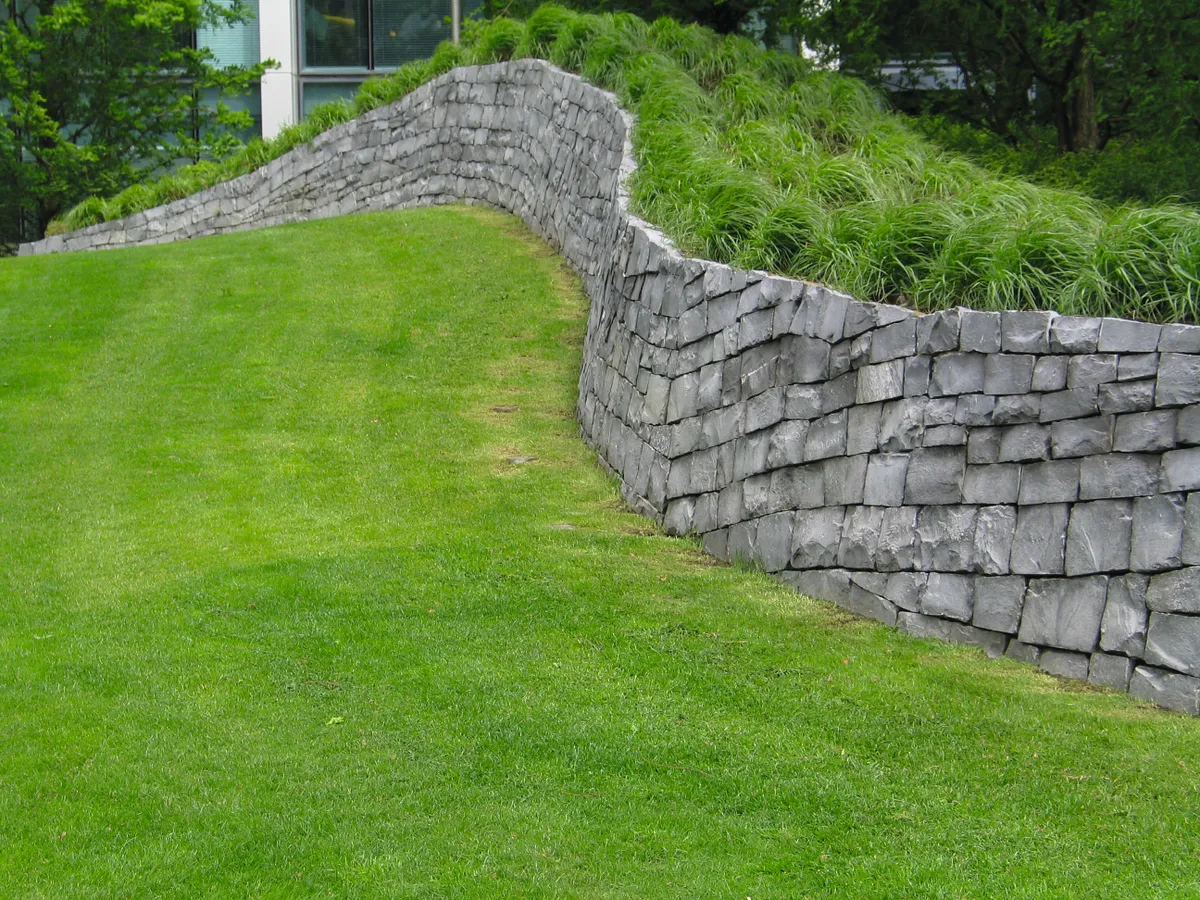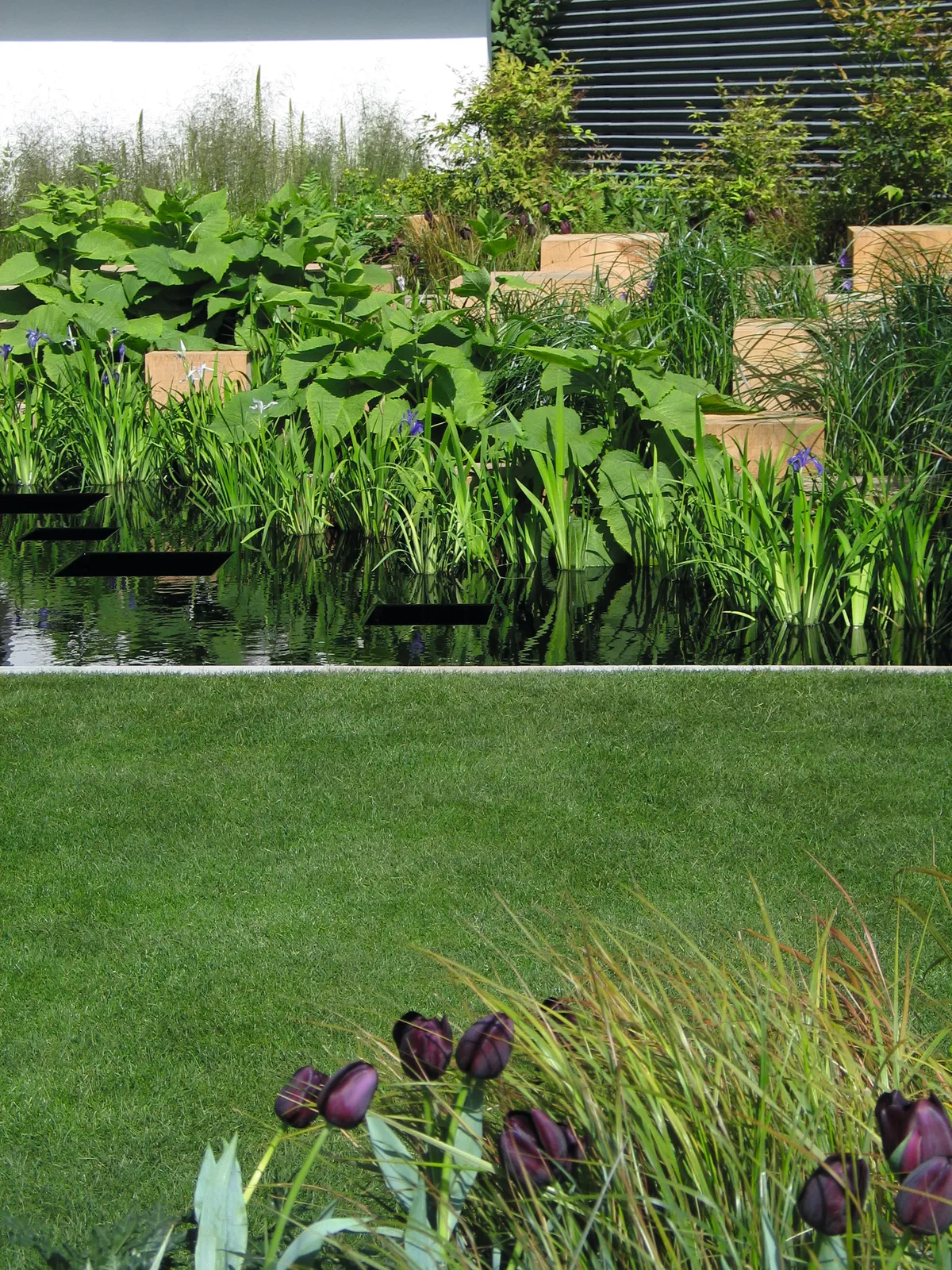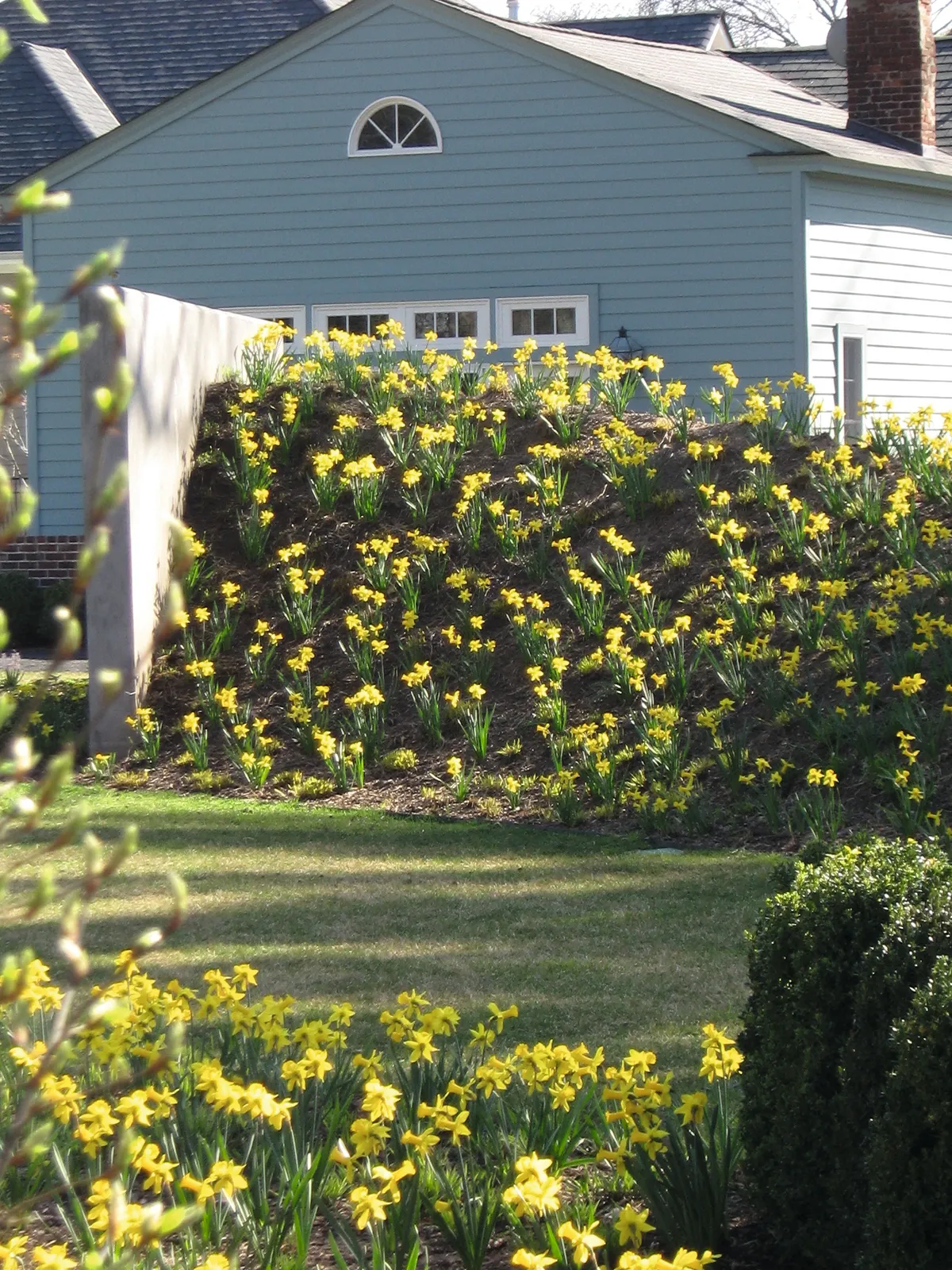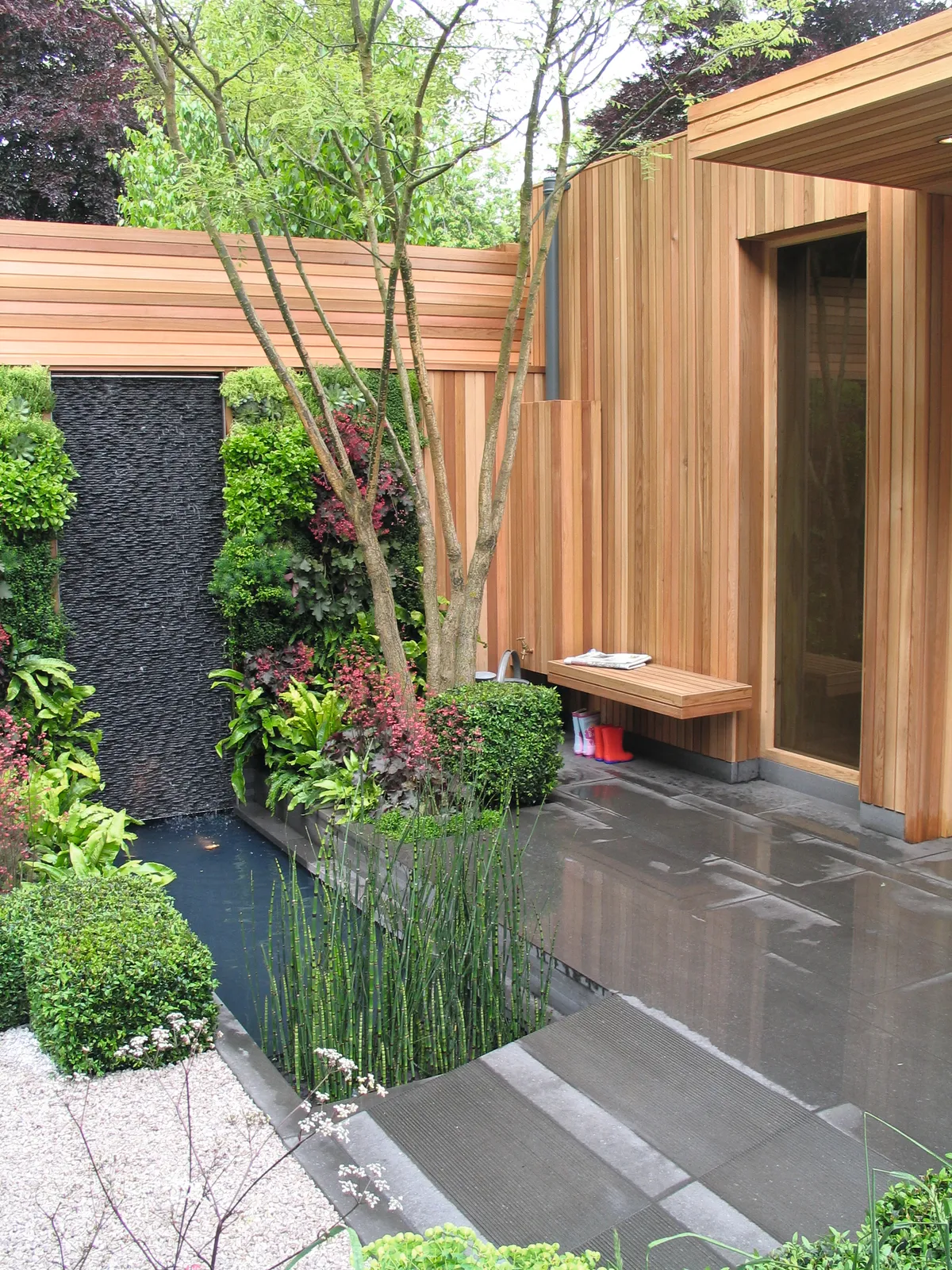Designing a garden on a surface that isn’t flat always presents extra challenges to a gardener or designer. A sloping piece of land with different levels can make a visually interesting garden, but creating workable garden spaces can be problematic.
The greatest disadvantage is that if you want to make usable flat areas, much of the garden may be taken up with the banks and steep slopes that link them together. The beauty of retaining walls is that they provide a way of changing level abruptly, and that is especially useful if space is tight.
Traditional methods
Traditionally, retaining walls were known as ‘mass retainers’ or ‘gravity walls’ and were made of stone or rubble heavy enough to hold back the weight of the earth heaped against them. Often these structures would be built at an angle, or ‘batter’, leaning back into the retained soil. This kind of structure, however, is expensive because of the amount of material and labour involved in its construction, and is now rarely used. So what are the most economic and visually appealing ways now used to retain soil?
Challenges
There are two main considerations for anyone wishing to hold back earth with a retaining wall. Firstly, the wall must be strong enough to hold the weight of soil behind it. Secondly, it should be able to cope with problems caused by the moisture that will percolate through the ground. A badly designed retaining wall acts as a barrier, which traps water.

Trapped water can cause damage in two main ways. If water behind the wall freezes, the wall may tip forward and collapse. In addition, standing water behind a wall may gradually be absorbed into it, weakening it.
Retaining structures below 1min height cause few problems. Their foundations need only be relatively shallow and the weight of soil they retain will be minimal. Smaller walls like this obviously cause fewer problems in terms of water obstruction. Besides, their collapse or failure would probably not prove catastrophic. Retaining walls over 1m in height, though, hold back much greater weight. They obstruct more ground water and are more likely to cause damage or injury should they crumble.
Most walls now are built of reinforced concrete, or reinforced hollow concrete block, often backfilled with concrete. This structure retains the ground, and a decorative ‘facing’ is then attached to create the appearance of a brick or stone wall. These structures take up much less space than the old mass retainers.
Modern retaining walls cope with ground water in two ways. Firstly, drainage pipes can be fitted into the wall, creating ‘weep holes’ that allow water to escape from the soil behind the wall. Weep holes are usually spaced 1-1.2m apart. Weep holes are effective but can be unsightly, because the water may stain the paving in front of the retaining wall as it drips down.
The alternative is a perforated drainage pipe, which runs behind the wall, delivering drained water into a soakaway in a convenient location. With both of these systems, the space immediately behind the retaining wall is back-filled with loose aggregate or gravel. This allows water to drain more easily, helping to prevent any unnecessary build-up of water.

Plantable structures
Such careful engineering is not always necessary. The Surrey School of garden design, championed by Edwin Lutyens and Gertrude Jekyll, favoured simple, low, retaining dry-stone walls. The benefit of this was that the walls could be planted to create ‘living’ structures. The walls at Wisley and at Jekyll’s home at Munstead Wood show this approach.
New walls can be treated in this way by inserting uPVC pipe sections into the structure as construction proceeds. Backfill cavities with soil, and plants are able to colonise the wall, softening its appearance.

Some structures enable planting to be an integral part of the retainer. Timber or concrete cells can be locked or pegged together, backfilled with soil and planted up. These structures can also be irrigated, although often groundwater will be encouraged to percolate through the structure. Such structures include gabions – steel-mesh boxes that can be back-filled with materials of your choice, including soil and plants. The mesh retains the soil and eventually disappears under foliage and flowers. The walls of the green dock in London’s Thames Barrier Park have been planted in this way.
Vertical gardens

More recently, geotextiles and membranes have been used to create plantable walls with plants inserted into pockets on vertical surfaces, often irrigated from above using stored rainwater. This approach, whose best-known innovator is Patrick Blanc, has seen the most dramatic greening of Paris, where walls, courtyards and whole buildings have been planted with lush ferns, grasses and perennials to create incredible mosaics of texture and colour.
It can prove practical, too, as the plants create a layer of thermal insulation on buildings. For small gardens, the relocation of the planting on to the walls provides more space on the ground for entertaining friends. Could this be the UK’s next big trend?
KEY POINTS TO TAKE AWAY
- Retaining walls over 1m in height should be designed by professionals, with calculations provided by structural engineers. They will assess soil conditions as well as the loading on the walls, contributing essential information to the design process. To ignore this could not only damage your property but potentially cause accidents should structures collapse due to a lack of experience in construction.
- Care should be taken during the construction of any retaining wall, as excavated banks can easily collapse due to soil type or heavy rain. Seek professional and skilled advice. Without careful planning, problems that arise out of shoddy or unsafe work could lead to a project taking much longer than it should.
- Soils such as heavy clay will have an impact on the design of retaining walls. These soils shrink when dry and expand when wet, creating additional problems for construction and maintaining the structure’s integrity through the seasons.
- Always consider the drainage implications of creating retaining walls and structures of any type. Inadequate drainage is likely to have serious implications in the long term.
- Create more space in smaller gardens by relocating plants on to the walls. Hydroponics – growing plants without soil – is increasingly popular and can be practical as well as decorative.
Useful websites
www.grasscrete.com – For a range of earth-filled retaining structures.
www.groundsense.co.uk – Gravity walls and gabion wall constructions.
www.hy-tengabions.com – Information and advice on gabions and their uses in retaining wall construction.
www.phigroup.co.uk – Offers many retaining solutions including the permacrib system, principally using timber.
www.verticalgardenpatrickblanc.com – Patrick Blanc’s website displays a range of projects that showcase his unique vertical gardens in a variety of fascinating designs.